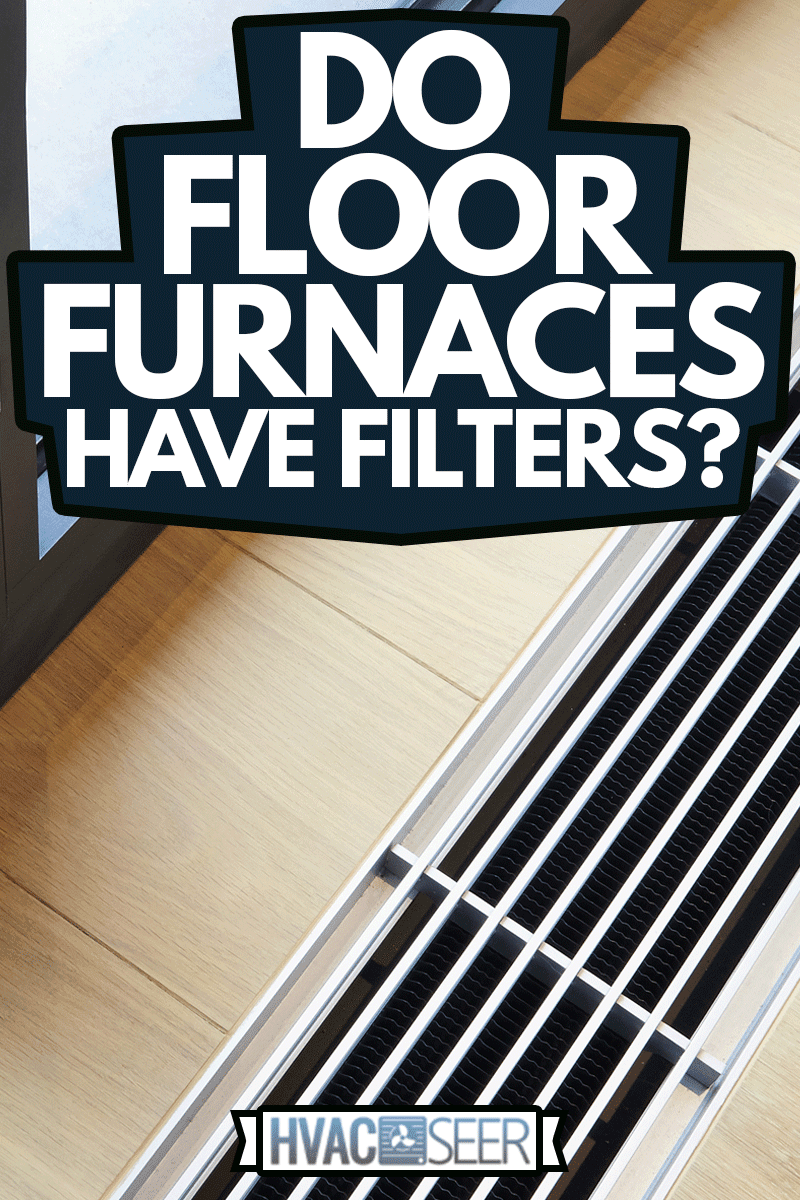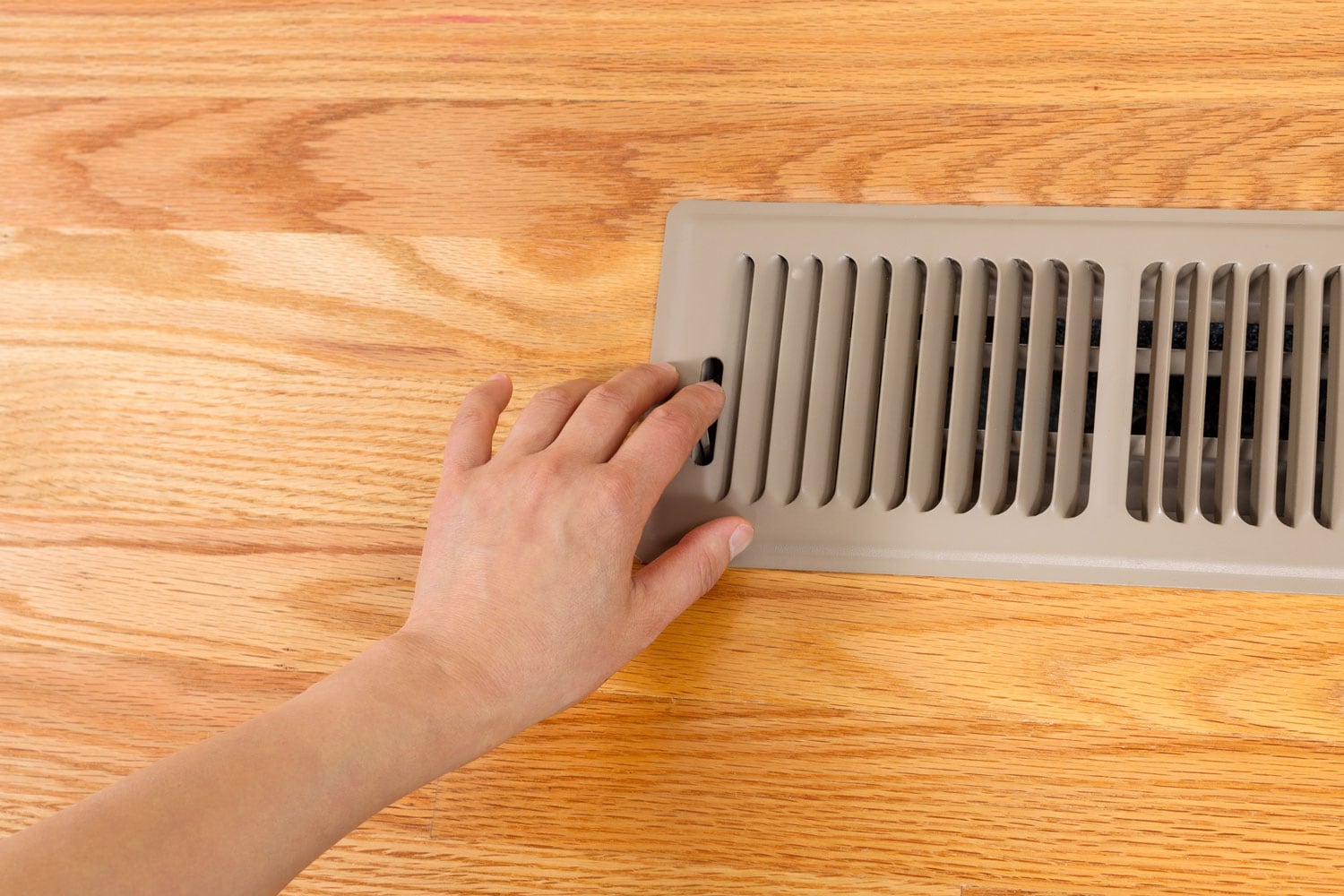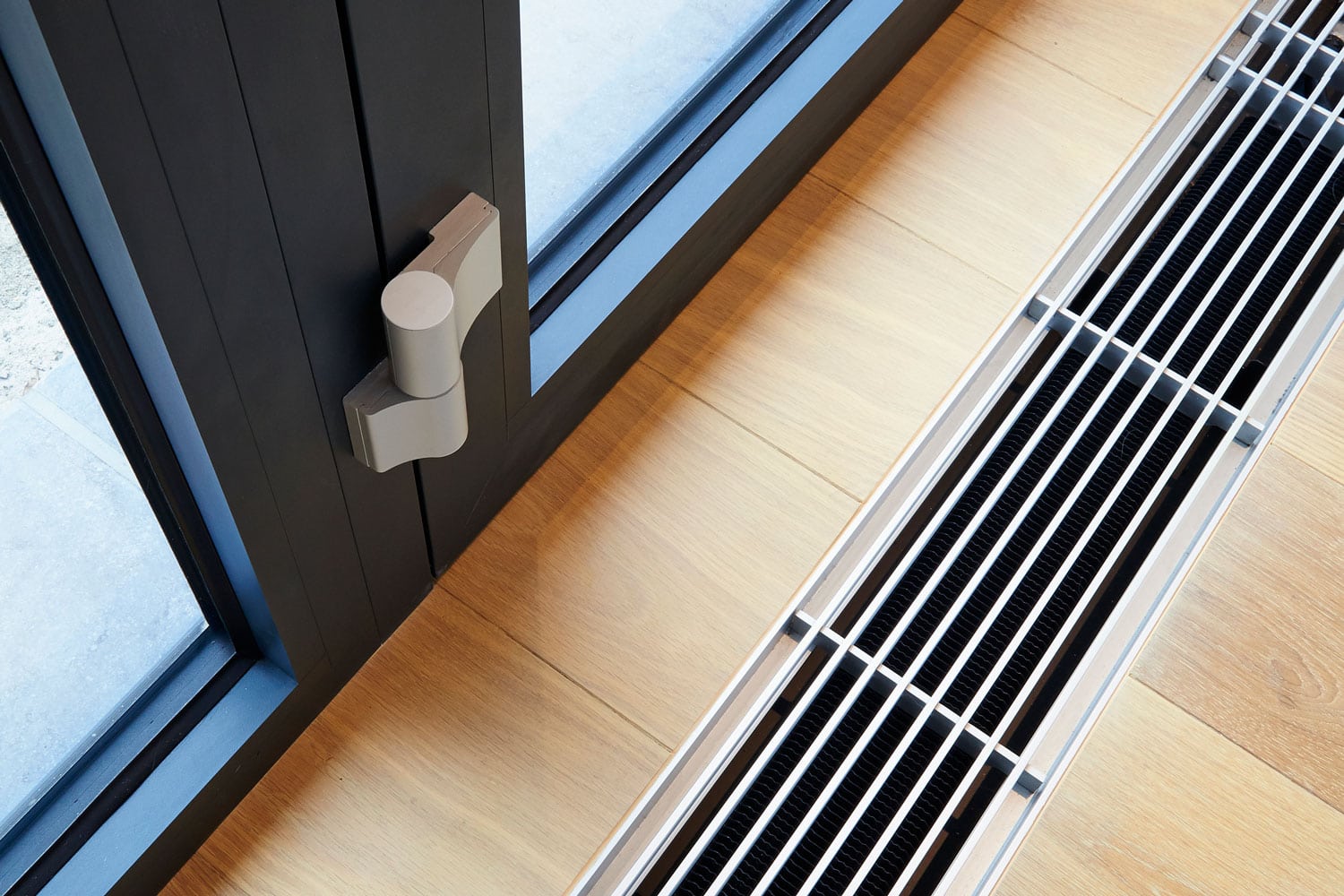Though floor furnaces aren't as prevalent as they used to be, many people still have them in their homes. If you've never had a floor furnace before, you may wonder if the unit has a filter or not. We have researched floor furnaces, how they operate, and whether or not they have filters. In this post, we will answer this question for you.
No, most older floor-based furnace does not have a filter that needs to be swapped out or cleaned. These furnaces typically do not have a blower fan. Instead, they use convection to heat your home through the ventilation system on the floor, so there is no blower motor forcing air from the furnace into the room. This is why these furnaces need to be cleaned more often than regular forced-air HVAC systems.
That being stated, there are some newer model floor furnaces that may have a filter that will need to be changed. Continue reading to learn more about these furnaces and how to determine if you have a filter and where it may be located.

How do I know if my furnace has a filter?
When purchasing a new furnace, the location of the filter and its details are included in the product specification listing. You'll also see a diagram that includes how to access the filter to remove it for cleaning or replacement.
Nine times out of ten, your furnace will have a filter that will need to be changed out every 2 to 3 months. However, if you have an old floor furnace without a filter, this may not be the case.
If your floor furnace is relatively new, the filter's location will usually be on the side of the unit.
Let's look at how to narrow down the location of a furnace's filter.
Closely inspect the furnace
If you can't locate your user's guide, the best thing to do is to closely inspect the furnace. More often than not, the filter for your HVAC system is going to be located on or near the furnace. It'll likely be located on the side of your furnace that has the return.
This is the area where the air from the blower moves into the house through the vent ducts. Sometimes the filter opening may be right at the bottom front of the furnace. Look for a small slit or opening about an inch and a half wide. You should be able to see the edge of the filter.
It's typically a thin metal slot that's about 12-18 inches wide. If you don't see a filter there, you may need to look on the other side of the furnace.
Inspect the walls and ceiling surrounding the furnace
In some furnaces, the filter will be located in the return vent in the ceiling. These vents are typically larger, and they're used to send air back to the handler through your return ducts.
Carefully inspect the ceiling and look for a return vent. Look inside the vent to see if there is a filter there. In some cases, there may be more than one return vent.
Remove the cover from the furnace
If you don't immediately see an air filter opening on the exterior of the furnace and you don't see any filters in the home's return vents, you may need to check inside the furnace itself. Some furnace brands house the filters inside of the unit.
For example, in American Standard furnaces, you will need to remove the front cover of the furnace to access and replace the filter. You'll also need to remove two to four screws holding the furnace cover in place.
So be sure to have a hex nut drill bit set at the ready. And always be sure to turn off the furnace before removing the cover to replace the filter.
How do I clean my floor furnace?

Cleaning a floor furnace is pretty straightforward. Let's look at how to do it.
1. Turn off the furnace
The first thing you'll need to do is turn off the furnace unit. To do this, turn the control valve to its off position. If you've had the furnace on for several minutes, wait about 15 to 20 minutes for the unit to cool down completely. Do not try to clean the furnace while it is still hot or you may risk physical injury.
2. Take off the register
Remove the top grill from the furnace. Next, take a handheld vacuum or an upright vacuum with a hose attachment and remove any dirt and debris from the heat exchanger.
Next, take a damp microfiber cloth and wipe down the area around the exchanger. Wipe down the walls of the interior of the furnace. You'll likely notice a large amount of dust and debris, so you may need additional cloth.
3. Inspect all of the burners
After cleaning the debris from the furnace, remove any protective coverings and unscrew the burner from the register. In most floor furnaces, you should be able to slide the burner out of its position.
When inspecting the burner, check for bends, damage, and other signs that may indicate that the burner needs to be replaced.
Note that even the smallest amount of damage on the burner can cause significant issues with the furnace's operation. Also, check the burner for any buildup of dust, debris, or spider webs, and remove them with the microfiber cloth. You can also use a garden hose to clean off the burner with cool water.
4. Clean the burner holes
Now take a look at it the brown ports to see if they're clogged with debris or soot. If they are, take a toothpick or a hardwire brush and gently scrub them to remove any blockages. Afterward, wipe down the ports using a damp microfiber cloth.
Find this hard-wired brush set on Amazon.
5. Inspect the heat exchanger
Take a look at the heat exchanger to see if there are any blockages, cracks, or other areas that may require attention. Performing a thorough inspection is the best way to prevent future problems with the furnace, as the heat exchanger is the most important component in the floor furnace.
Look for excessive debris around the exchanger as well as burn signs that may indicate that there is a crack somewhere in the exchanger.
6. Reassemble the floor furnace
After inspecting and cleaning all of the internal components, place the burners back inside of the furnace. Next, place the grill back on top of the furnace and be sure to screw in any screws that may hold it in place.
Wait about 30 minutes for the furnace to dry out completely and then turn it back on for operation. If you notice any weird smells such as gas or hear any strange noises, turn off the furnace to inspect it again. If you aren't able to troubleshoot the issue, it's best to contact an HVAC technician.
Are old floor furnaces safe?
Floor furnaces aren't necessarily unsafe. However, they should be used with caution, as placing furniture directly on top of them can cause a potential fire hazard. You also risk physical injury by directly touching or standing on top of a floor furnace.
This being stated, it's always best to note the location of your floor furnace and to use caution when it is turned on in the colder months of the year.
How long does a floor furnace last?
Floor furnaces have an average lifespan similar to that of traditional furnaces, which is anywhere from 15 to 20 years. However, the lifespan can vary depending on the frequency of use and the maintenance of the unit.
How much does it cost to replace a floor furnace?
It depends on the make and model of the furnace. However, you typically spend anywhere from $1,500 to $2,000 on the furnace itself. Installation can cost anywhere from $350 to over $800 depending on the layout of your home and the requirements to replace the furnace.
Wrapping Things Up

Floor furnaces aren't as efficient as traditional upright furnaces. However, they can effectively heat your home. If you find yourself having trouble with your floor furnace, it may be best to upgrade to a late-model upright furnace to maximize your heating efficiency.
We hope this post has been helpful in explaining how to clean these units and determine whether or not they have an air filter.
Before you go, be sure to check out our other posts:

